Lancaster Notables
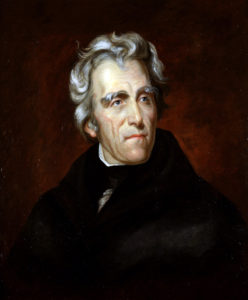
Andrew Jackson was born March 15, 1767 somewhere near the SC and NC border. Jackson was the seventh President of the United States (1829-1837). He was nicknamed Old Hickory because of his toughness and aggressive personality. Jackson received a sporadic education in the local “old-field” school, and for a time in 1781, he worked for a time in a saddle-maker’s shop. Later he taught school and studied Law in Salisbury, North Carolina. In 1787, he was admitted to the Bar Association. Jackson was elected as a delegate to the Tennessee Constitutional Convention in 1796. When Tennessee achieved statehood that year, Jackson was elected its U.S. Representative. The following year, he was elected U.S. senator, but he resigned within a year. In 1798, he was appointed a judge of the Tennessee Supreme Court, serving until 1804. After the First Seminole War, Jackson was named Florida’s military governor and served from March 10, 1821, to December 31, 1821. Jackson was elected President in 1829 where he served until 1837. In January 1835, Jackson paid off the entire national debt, the only time in U.S. history that has been accomplished. He enjoyed eight years of retirement until his death at the Hermitage on June 8, 1845, at the age of 78, of chronic tuberculosis, dropsy, and heart failure.
Dr. James Marion Sims was born January 25, 1813 in Lancaster, SC. Sims was a physician and a pioneer in the field of surgery, considered by some as the father of modern gynecology. His most significant work was to develop a surgical technique for the repair of vesicovaginal fistula, a severe complication of obstructed childbirth.
Sims was the son of John and Mahala Mackey Sims. Sims’ father, John, was elected sheriff of Lancaster County in 1825. This is when Sims entered Franklin academy. Sims then went on to study for two years at the South Carolina College in Columbia, and then took a three-month course at the Medical College of Charleston. He moved to Philadelphia, Pennsylvania and enrolled at the Jefferson Medical College, where he graduated in 1835. He moved back to Lancaster to practice, but then moved to Alabama. He returned to Lancaster in 1836 to marry Theresa Jones, the daughter of Dr. Barlett Jones. He met her when he was studying at South Carolina College in Columbia. They moved to Montgomery, Alabama where in 1845 Sims established a private hospital for women.
Sims moved to New York in 1853 because of his health and determined to focus on diseases of women. In 1855 he founded the Women’s Hospital, the first hospital for women in America. After quarreling with the board of the Woman’s Hospital over the admission of cancer patients (which he favored and which the board opposed because of the mistaken belief that cancer was contagious) he became instrumental in establishing America’s first cancer institute, New York Cancer Hospital.
From 1876 to 1877, Sims served as president of the American Medical Association. He was halfway through writing his autobiography and planning a return visit to Europe when he died of a heart attack on November 13, 1883 in New York.
Leroy Springs was born on November 12, 1861 on Springfield Plantation, near Fort Mill, SC. Colonel Leroy Springs, one of the foremost pioneers in cotton manufacturing was equally prominent is banking, cotton oil, rail and insurance. During his day, he may have been the busiest textile executive of them all.
He was a student at the University of North Carolina from 1878-1880. After the university, he entered the mercantile business and became a salesman for a Charlotte wholesale grocery firm.
This began a long, successful career in business. He married Grace Allison White, daughter of Samuel E. White of Fort Mill, in 1891. She died in 1907. He began his own business, Leroy Springs and Company in Lancaster, SC in 1884. He organized the Kershaw, SC Mercantile and Banking Co. in 1888. He reorganized the two mills of what would become the most famous location, Fort Mill Manufacturing Company in 1904.
He served as Colonel on the staff of Governor John P. Richardson from 1886 until 1890. He was Chairman of the Board of Trustees of the Lancaster Grade School for a period.
In 1928, toward the end of his career, he was president of seven cotton mill companies, president of the Bank of Lancaster, the Lancaster and Chester Railway, the Lansford Water and Power Company of Lancaster; Vice-President of the Bank of Kershaw; Director of the Catawba Fertilizer Co., the Lancaster Cotton Oil Co., First National Bank of Camden, National Exchange Bank of Kershaw, Savings bank of Fort Mill, the Southern Home Fire Insurance Co. of Charleston, the Prudential Fire Insurance Co. of Greenville, Trustee of the Mutual Life
Insurance Co. of New York,; Director of the American Trust Co. of Charlotte; Vice-President of the Columbia,, SC National Bank. He was a director of the Charleston, Columbia and Augusta Rail way at the time it merged with the Southern Railway.
He died in 1931 and turned over the textile business to his son, Colonel Elliot White Springs, a distinguished World War I flying ace and entrepreneur who really put Springs textiles on the national map with imaginative advertising and outlandish quotes.
Colonel Elliot White Springs was born July 31, 1896 in Lancaster, SC to Col. Leroy Springs and Grace Allison White Springs. He was a business man and an American Flying Ace of World War I, credited with shooting down 16 enemy aircraft. His mother died when he was 10 years old, and at 12, he was sent to the Asheville School, a new academy in North Carolina.
He attended Culver Military Academy, Princeton University, and Oxford University. Springs enlisted in the United States Army in 1917. He was sent to England to train with the Royal Air Force, and was selected by the Canadian flying ace Maj. William Avery Bishop to fly the SE-5. Springs was shot down on June 27, 1918. After recovering from wounds received, he was reassigned to the US Air Service’s 148th Aero Squadron.
Upon his return to the United States, Springs wrote numerous books, short stories, and articles. Many of these were about his experiences in combat aviation. The most notable of these was Warbirds: The Diary of an Unknown Aviator, which was based the correspondence of John McGavock Grider, a friend and comrade of his who did not survive the war.
Springs married Frances Hubbard Ley on October 4, 1922. They were the parents of a daughter, Anne Kingsley Springs Close, and a son, Leroy “Sonny” Springs II, who was killed in an airplane crash May 12, 1946, at the age of 22.
In 1937, at 35 years old, he inherited from his father the task of running Springs Cotton Mills, which consisted of five comparatively obsolete plants in Lancaster, Chester, and York counties. Everyone who knew Elliott Springs expected him to waste his inheritance within a few years. His father’s estate was valued at about $5 million, ranking him informally as the wealthiest man in South Carolina. But few people realized to what extent Springs committed himself to learning the business or how hard he was willing to work to learn the fundamentals of textile manufacturing. He not only learned the new business but became familiar with every technical detail related to operating a textile plant. He worked on a loom in his basement, testing proposals of his workers and supervisors. In 1941, Springs returned to his nation’s service in the WS Army Air Corps.
In the face of the Depression, Springs consolidated the five mills into one company, built a finishing plant, established a sales organization, and modernized the business. At the end of 1958, the last full year he managed Springs Cotton Mills, assets were $138.5 million, compared to $13 million when he became president.
In 1958, Springs Cotton Mills was only the seventh-largest textile company in the United States, but it led the textile industry in profitability. And Springs Mills had become the world’s largest producer of sheets and pillowcases.
Col. Springs is well known for his series of humorous and risqué ads that made Springmaid sheets a household word and changed the course of American advertising. Today, nearly 45 years after those ads ran, the company receives hundreds of requests each year for reprint copies, and the series is used in advertising courses in dozens of universities as the most successful ad program ever launched.
Springs died October 15, 1959 from pancreatic cancer. Before his death, he designated his son-in-law, H. William Close, as his successor. Today, Springs Industries, Inc., is a $2.2 billion public company.
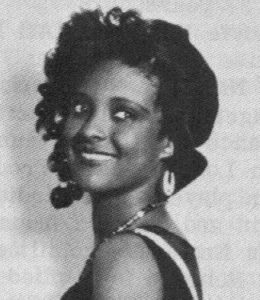 Nina Mae McKinney was born June 13, 1912 in Lancaster, SC. McKinney was one of the first African-American film stars in the United States and was one of the first African Americans to appear on British television. She acted in school plays in Lancaster and taught herself to dance. Her parents moved to New York to work during the Great Migration of African Americans out of the rural South in the early 20th century, and left their young daughter with her Aunt Carrie. McKinney worked internationally during the 1930s and in the postwar period in theatre, film and television, after getting her start on Broadway and in Hollywood. McKinney was dubbed “The Black Garbo” in Europe because of her striking beauty. McKinney was one of the first African-American film stars in the United States, as well as one of the first African Americans to appear on British television. In 1935, McKinney married jazz musician James “Jimmy” Monroe. They divorced in 1938. After 1960, McKinney lived in New York City. On May 3, 1967, she died of a heart attack at the age of 54.
Nina Mae McKinney was born June 13, 1912 in Lancaster, SC. McKinney was one of the first African-American film stars in the United States and was one of the first African Americans to appear on British television. She acted in school plays in Lancaster and taught herself to dance. Her parents moved to New York to work during the Great Migration of African Americans out of the rural South in the early 20th century, and left their young daughter with her Aunt Carrie. McKinney worked internationally during the 1930s and in the postwar period in theatre, film and television, after getting her start on Broadway and in Hollywood. McKinney was dubbed “The Black Garbo” in Europe because of her striking beauty. McKinney was one of the first African-American film stars in the United States, as well as one of the first African Americans to appear on British television. In 1935, McKinney married jazz musician James “Jimmy” Monroe. They divorced in 1938. After 1960, McKinney lived in New York City. On May 3, 1967, she died of a heart attack at the age of 54.
Aaron Andrew Robinson was born June 23, 1915 in Lancaster, SC. Robinson made his major league debut for the New York Yankees on May 6, 1943, playing in only one game before leaving to serve in the US Coast Guard for the remainder of World War II. When the war ended in 1945, Robinson returned to the Yankees. He took over as the Yankees’ starting catcher in 1946. Robinson began the 1947 season as the Yankees starting catcher, and was named as a reserve player for the American League in the 1947 All-Star Game. However, as the season progressed, Yogi Berra began to take over as the starting catcher. In the 1947 World Series, Robinson appeared in three games, as the Yankees defeated the Brooklyn Dodgers in a seven-game series. Robinson then played for the Chicago White Sox and the Detroit Tigers. Robinson retired in 1951, finishing his career with the Boston Red Sox. After retiring as a player, Robinson became a manager in the minor leagues, managing the Fayetteville Highlanders to the 1954 Carolina League championship. He later managed the Winston-Salem Twins and won another title with the Shelby Colonels, winning the 1961 Western Carolina League championship. Robinson died March 9, 1966 at the age of 50.
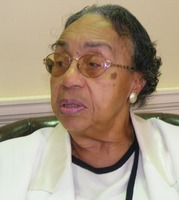 Hattie N. Harrison was born February 11, 1928 in Lancaster, SC. Harrison attended the Charlotte, North Carolina and Baltimore City public schools. She is a graduate of the Antioch College after which she became a teacher. She was a member of the Democratic State Central Committee, Baltimore City from 1970 to 1974, and a member of the Eastside Democratic Organization. Harrison was the chairperson of the Maryland House of Delegates Rules and Executive Nominations Committee, and was the first African-American woman to chair a legislative committee in Maryland. She was a member of the Legislative Black Caucus of Maryland (formerly Maryland Legislative Black Caucus) and the Women’s Legislators of Maryland. In 2005, she received the Casper R. Taylor, Jr. Founder’s Award from the Speaker’s Society of the Maryland House of Delegates. Harrison died on January 28, 2013. At the time of her death, she was the longest serving delegate to the Maryland House of Delegates.
Hattie N. Harrison was born February 11, 1928 in Lancaster, SC. Harrison attended the Charlotte, North Carolina and Baltimore City public schools. She is a graduate of the Antioch College after which she became a teacher. She was a member of the Democratic State Central Committee, Baltimore City from 1970 to 1974, and a member of the Eastside Democratic Organization. Harrison was the chairperson of the Maryland House of Delegates Rules and Executive Nominations Committee, and was the first African-American woman to chair a legislative committee in Maryland. She was a member of the Legislative Black Caucus of Maryland (formerly Maryland Legislative Black Caucus) and the Women’s Legislators of Maryland. In 2005, she received the Casper R. Taylor, Jr. Founder’s Award from the Speaker’s Society of the Maryland House of Delegates. Harrison died on January 28, 2013. At the time of her death, she was the longest serving delegate to the Maryland House of Delegates.
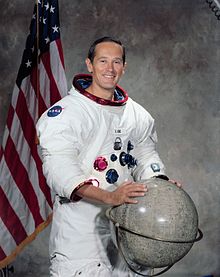 Charles Moss “Charlie” Duke, Jr. was born October 3, 1935 in Charlotte NC. He attended Lancaster High School in Lancaster SC and graduated valedictorian from Admiral Farragut Academy in St. Petersburg, Florida. He received a Bachelor of Science Degree in naval sciences from the United States Naval Academy in 1957 and a Masters degree in aeronautics from the Massachusetts Institute of Technology in 1964. He is a retired US Air Force brigadier general and a former US astronaut for NASA. As a lunar module pilot for Apollo 16 in 1972, he became the tenth youngest person to walk on the moon. In 1973, Duke received an honorary doctorate for philosophy from the University of South Carolina. He also received an honorary doctorate for humanities from Francis Marion University in 1990. He was named South Carolina man of the year in 1973.
Charles Moss “Charlie” Duke, Jr. was born October 3, 1935 in Charlotte NC. He attended Lancaster High School in Lancaster SC and graduated valedictorian from Admiral Farragut Academy in St. Petersburg, Florida. He received a Bachelor of Science Degree in naval sciences from the United States Naval Academy in 1957 and a Masters degree in aeronautics from the Massachusetts Institute of Technology in 1964. He is a retired US Air Force brigadier general and a former US astronaut for NASA. As a lunar module pilot for Apollo 16 in 1972, he became the tenth youngest person to walk on the moon. In 1973, Duke received an honorary doctorate for philosophy from the University of South Carolina. He also received an honorary doctorate for humanities from Francis Marion University in 1990. He was named South Carolina man of the year in 1973.
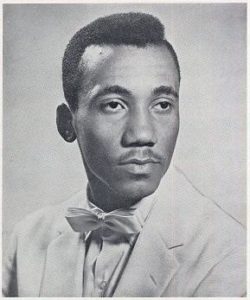 Maurice Williams (Maurice Williams and the Zodiacs) was born April 26, 1938 in Lancaster, SC. His first experience with music was in the church, where his mother and sister both performed. By the time he was six, Williams was performing regularly there. With his childhood friend Earl Gainey, Williams formed the gospel group the Junior Harmonizers. As rock and roll and doo-wop became their primary interest, the Junior Harmonizers changed their name to the Royal Charms. The band then changed its name to the Gladiolas in 1957 and the Excellos in 1958. Williams finished high school and while on the road with the band, they came across a small car known as the Zodiac. The group became the Zodiacs in 1959, and Henry Gatson replaced Earl Gainey.
Maurice Williams (Maurice Williams and the Zodiacs) was born April 26, 1938 in Lancaster, SC. His first experience with music was in the church, where his mother and sister both performed. By the time he was six, Williams was performing regularly there. With his childhood friend Earl Gainey, Williams formed the gospel group the Junior Harmonizers. As rock and roll and doo-wop became their primary interest, the Junior Harmonizers changed their name to the Royal Charms. The band then changed its name to the Gladiolas in 1957 and the Excellos in 1958. Williams finished high school and while on the road with the band, they came across a small car known as the Zodiac. The group became the Zodiacs in 1959, and Henry Gatson replaced Earl Gainey.
After taking a demo of “Stay” to Herald Records in New York, the song was pressed and released in early 1960. “Stay” is the shortest recording ever to reach #1 on the Billboard Hot 100 chart in the United States. The inclusion of “Stay” on the soundtrack to the film Dirty Dancing in 1987 led to the song selling more records than it had during its original release.
Williams continued recording, touring, and releasing music through the 1970s, 1980s, and 1990s. He is still active in the music industry, residing in Charlotte, NC. He was inducted into the North Carolina Music Hall of Fame in 2010.
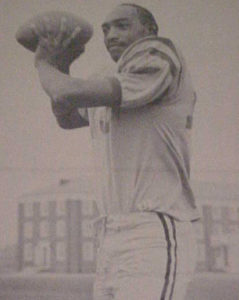
Jim Duncan was born August 3, 1946 in Lancaster, SC. Jim Duncan was a professional American football defensive back. He started in Super Bowl V for the Baltimore Colts. Duncan attended college at Maryland Eastern Shore where he played for the Hawks. He was drafted by the Baltimore Colts in the 4th round (107th overall) of the 1968 NFL draft. Jim Duncan died at the age of 26 in October 1972.
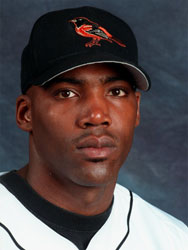
Danny Clyburn, Jr. was born April 6, 1974 in Lancaster, SC. Clyburn attended Lancaster High School, where he was selected as All-region in 1992. That same year he was drafted second overall by the Pittsburg Pirates. In 41 games over three years in the major leagues, Clyburn played outfielder for multiple teams, including the Baltimore Orioles and the Tampa Bay Devil Rays, with whom he played his last game in 1999.
Hernando Petrocelli “Pep” Harris was born September 23, 1972 in Lancaster, SC. He attended Lancaster High school. In the seventh round of the 1991 draft, the Cleveland Indians chose Harris. The Indians traded Harris to the California Angels. He made his major league debut in the Hall of Fame game in 1996 against the Indians; pitching 21⁄3 scoreless innings and striking out 3 batters in an 8-7 win for the Angels. He played for the California/Anaheim angels from 1996 to 1998. His final game was September 27, 1998.
William Brice was born on October 24, 1974 in Lancaster, SC. He attended Lancaster High School where he graduated in 1992. Brice attended the University of Virginia where he received a Degree in Civil Engineering. After graduating in 1997, Brice pursued an NFL career for five years. He punted in two seasons: 1997 for the Rams and in 1999 for the Bengals.
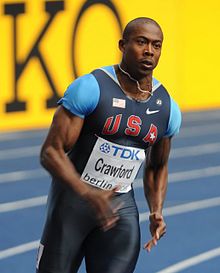 Shawn Crawford was born in January 14, 1978 in Lancaster, in the community of Van Wyck. He attended Indian Land High School then went on to run for Clemson University, where he claimed 11 All-America honors and three National Championships. In 2001 Crawford won the 200 meter at the Indoor World Championships. He then went to the World Athletics Championships where he tied for the 200 meter bronze metal. He then travelled to the Goodwill Games, where he claimed his second gold medal of the year.
Shawn Crawford was born in January 14, 1978 in Lancaster, in the community of Van Wyck. He attended Indian Land High School then went on to run for Clemson University, where he claimed 11 All-America honors and three National Championships. In 2001 Crawford won the 200 meter at the Indoor World Championships. He then went to the World Athletics Championships where he tied for the 200 meter bronze metal. He then travelled to the Goodwill Games, where he claimed his second gold medal of the year.
At the 2004 Summer Olympics in Athens, Greece, Crawford ran the 100 m final in 9.89s, finishing in fourth place just 0.04s behind first place finisher. That was the first race in history with four competitors under 9.90s. Crawford went on to win the gold medal in the 200 m in 19.79s. Later, he claimed a silver as part of the US 4 x 100 relay team.
He qualified for the 2008 Summer Olympics in the 200 m dash, finishing second at the trials. Crawford won the 200 m at the 2009 US Championships, and qualified to represent the United States at the 2009 world Championships in athletics. He ran 19.89s in the final of the competition, his best of the season, netting the bronze metal.
Sheldon Dion Brown was born March 19, 1979 in Lancaster, SC. Brown attended Lewisville High School then went on to play college football at the University of South Carolina. While majoring in Sports and Entertainment Management, he was a four-year player and three-year starter. A two-time All-SEC awardee in football, Brown also played baseball for South Carolina during his senior year. Brown was a second round draft pick of the 2002 NFL Draft out of the University of South Carolina by the Philadelphia Eagles. Known for his hard hitting, he earned additional attention during the 2006 NFC divisional Playoff Game against the New Orleans Saints, when he prevented running back Reggie Bush from catching a pass, by delivering a massive, blind-sided hit, which he dislodged the pass and knocked Bush to the ground for some time. This hit was chosen by a number of football analysts as the hit of the year. In 2008, Brown was named the recipient of the Philadelphia Sports Writers Association “Good Guy” Award.
Julie Roberts was born February 1, 1979 in Lancaster, SC. The daughter of an engineer and accountant, she began her life performing in pre-school plays. She also was in school choirs and performed in a rendition of “My Fair Lady” at a singing summer camp. Roberts began performing country music as a child. When she was in junior high and high school, she toured with her family, playing at festivals in North Carolina, South Carolina and Georgia.
She first attended the University of South Carolina at Lancaster from 1997 to 1999 before graduating from Belmont University in Nashville, Tennessee, with a degree in business administration. Roberts performed in local clubs and restaurants until graduation. She began working for Mercury Nashville Records, later becoming assistant to label head Luke Lewis. During her tenure there, she recorded a demo tape with producer Brent Rowan during her off-time. Rowan eventually played the tape for Lewis, who was favorably impressed by the recording. In 2004, Roberts made her debut single “Break Down Here”, a Top 20 hit. Roberts and Mercury Records parted ways at the beginning of May 2010. She released her third album “Alive” on June 7 as an independent artist, with the first single being “NASCAR Party”. Sun Records signed Roberts to a recording contract in mid-2013. Her album will be the first full release for the label in 40 years.
